Watching the "smile" of Athens 2,500 years ago in Shanghai: a small and large exhibition.
“This exhibition is the last exhibition of the Year of the Rooster in Shanghai Museum. It is also an attempt at the micro-exhibition. It is small, but also very large, rich and full, representing the ancient Greek culture.†Director Yang Zhigang of the Shanghai Museum said this evening. .
At 6 o'clock on the evening of January 10, the ancient style smile from the "girl" Cora in Athens more than 2,500 years ago was finally unveiled. The exhibition "Elegance and Carnival: Treasures from the Acropolis Museum" opened in the Shanghai Museum. Although the exhibition was exhibited in the museum hall, and only two exhibits of the Kola statue and the dance picture bottle painting cover were held, their significance should not be underestimated. They are all representative symbols of ancient Greek culture. And the theme of this exhibition - elegance and carnival. They welcomed Chinese and foreign visitors on the occasion of the Chinese New Year.

Opening scene
Two pieces of exhibits condense ancient Greek culture
Elegance and Carnival: The Treasures from the Acropolis Museum has only two exhibits, but it is a very representative symbol of ancient Greek culture. From the perspective of the subject matter, the two exhibits are the two most in Greek mythology. The famous and most loved gods - Athena and Dionysus are related; from a functional point of view, the statue of Kola as a sacrifice and the cover of a dance picture of the daily necessities show the ancient Greek religious offerings and daily life; from the material point of view, the Kola statue is made of marble from Paros, while the dance picture bottle cap is made of clay, showing the stone in ancient Greek crafts. Two typical craftsmen of statues and painted pottery; from the temperament style of the exhibits, the figure reflected by the statue of Kola is elegant and dignified, and the cover of the bottle of paintings depicts the carnival scene, which seems to be ancient The interpretation of the duality of the Greek civilization and the Greek blood should also be the theme of this exhibition - elegance and carnival.
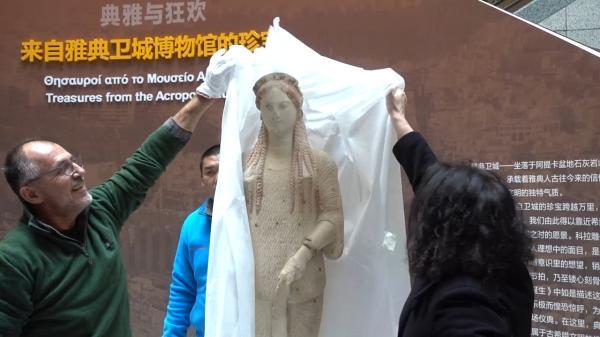
Cora statue
Many statues of Greece are either broken or faded due to factors such as the Hippo war. The statue of Cora in this exhibition is undoubtedly included in this exhibition. Dimitrios Pandermalis, director of the Acropolis Museum in Greece, told the journalist, "Some statues will be restored by some machines, and some of them are based on the statue itself. The imprint is based on the imprint of the statue for analysis and restoration, and some of the chemical changes have occurred over time. For example, blue will turn green, and we will have a corresponding machine for analysis and then restore. The primary colors of this statue should be red, blue, yellow and green.
At the opening ceremony, the Greek side also revealed a small cricket to evaluate the Greek statue. "We have some standards, first look at the whole statue, then look at his shape, then the action is not natural, the third is to look at its details, such as the carving of some costumes of the statue, through the marble carving to represent the characters The image, if you can make the characters very dynamic, it means that the statue is very good."
Mentioning another piece of dance music and paintings, the curator of the Acropolis Museum in Greece told the reporter, "First of all, the Greeks make pottery, first of all, pay attention to the color of the pottery, there is a lot of research on color, and then we show this today. Pottery, which can be displayed mainly because its color is special, and then it is not easy to fade. Pottery is equivalent to porcelain in ancient Greece, when ancient Athenians felt that pottery is a symbol of wealth, then they will Pottery was transported to Italy, and then gold metal was used as a symbol of wealth. Greek mythology reflects some of the Greek thoughts. Myth is actually between reality and imagination. It is actually a mixture of reality and imagination. Some myths also reflect some political thoughts, because there are gods in mythology. In real life, we also have monarchs to carry out our thoughts, which is to use myths to give the masses some cultural support."
The exhibition hall in Shangbo, the natural light reproduction exhibits
Although the Shangbo lobby placed the pillars of the Mayan civilization in 1999, this is the first time the Shanghai Museum has placed the exhibition in the lobby of the museum.
Li Zhongmou, deputy director of the Shanghai Museum, told the journalist that the selection of the lobby as a venue for exhibitions is also a multi-faceted reason. First, there are currently three temporary exhibitions, the Shanxi mural exhibition, the Russian tour painting exhibition and the Guishuang Dynasty, so the venue is limited; second, because of the number of exhibits, it is worthwhile to change one way, change one idea, hope The exhibits will allow more to see. The lobby is an inevitable place and an exhibition that can be seen at first sight. Although the exhibits are small, they are also representative of the archaeological finds of the ancient Greek Acropolis. At the same time, these two exhibits also represent two very important aspects of Greek culture. Sculpture and painted pottery are the two most representative aspects of Greek culture and art.
At the same time, Li Zhongmou said, “The natural lighting of the Acropolis Museum is very good, so the statues from their museums are also suitable for display in the lobby with full natural light, and natural light can reproduce its true look.â€
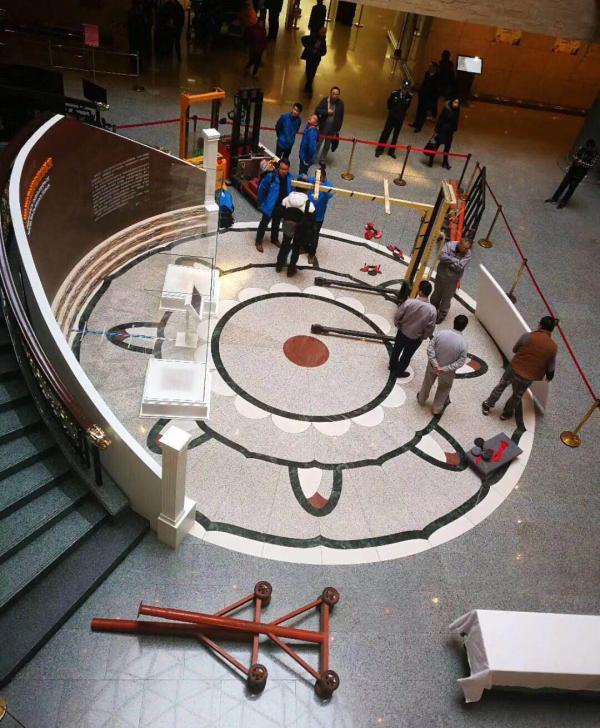
Exhibition site
The “澎湃新闻†reporter saw in the exhibition hall that the exhibition hall was very bright because the top of the exhibit was the skylight of the museum. There is a small display between the two exhibits, playing a video, in order to give the audience a more detailed understanding of the Greek Acropolis Museum.
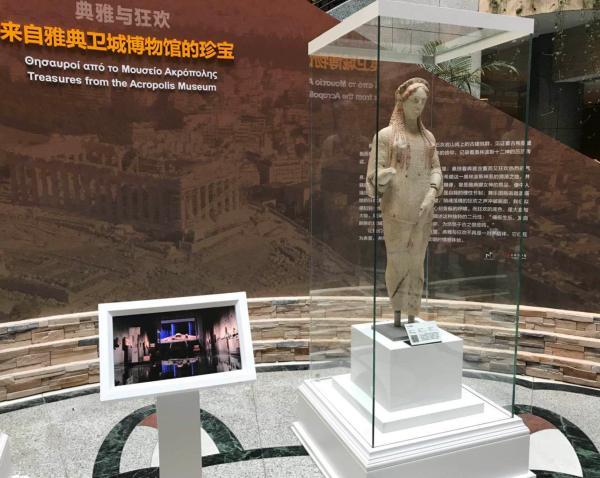
Exhibition hall
It is reported that since the statue of Kola is made of marble, it is relatively heavy. In order to facilitate the standing of the statue, the Shanghai Museum has specially customized the metal base. Wei Gang, a staff member of the exhibition department, told the journalist that the two showcases were different from the past and were also made to order. The showcases were open-door. It is worth mentioning that due to the exhibition in the lobby, the reporter saw on the scene that many viewers who were present also picked up the mobile phone and recorded a rare exhibition scene.
The two exhibits selected this time were selected by the Shanghai Museum and the Acropolis Museum. Li Zhongmou said, "Because it is limited to two exhibits, I chose a statue and a painted pottery. Of course, the Shanghai Museum also brought a bronze and a painting, two different varieties. ."
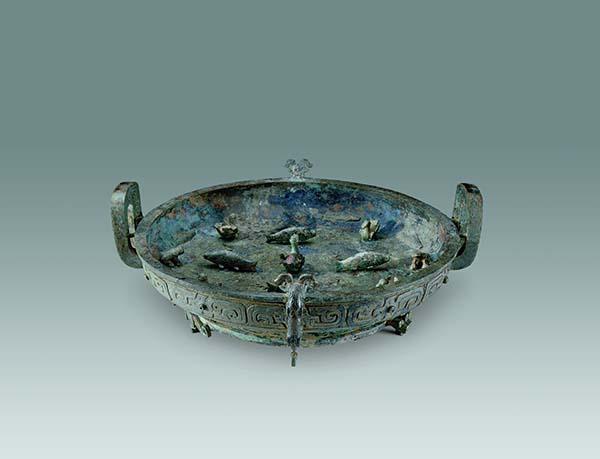
Zi Zhong Jiang Pan Bo (going to Greece exhibits)

Qing Wu Hong Qing Jiang travel map (partial, to Greece exhibits)
Presenting "elegance and carnival" with traditional Greek music
In the evening, the opening music performance was held at the Shanghai Museum, inviting the Greek Consul General and his partners to bring pure Greek traditional music. They used the most representative national musical instrument of Greece, Bouzouki, and the instrumental duo of the Utchenko, the father of the lute, which had an important influence on the stringed instruments of the Mediterranean culture, which fits the theme of this exhibition - "elegance and Carnival, the traditional music of the "female" temperament, the goddess culture and the wild spirit of the Dionysian spirit in Greek folk music, the prelude to this exhibition with a pure "Greek spirit".

Musicians: Bouzouki (Buzuqin, Greece) and Oud (Udchenko, Malaysia)
The performances include Udqin's impromptu, Ta Xyla, Georgitsa, etc. Ta Xyla is a traditional song from Lesbos Island, Greece. The island is famous for its first female lyric poet Sappho (Sappho, 630 BC) Or 612~ about 592 or 560) and famous in the world. The song titled "The Woods" is said to have been played to celebrate the completion of an oil mill (the olive oil is the cornerstone of the Greek diet). The song was also circulated in western Greece and the Caucasus. Its widely circulated version is called Chechen Girl, which was recorded and recorded by Tanburi Cemil Bey (1873-1916). Georgitsa is an Eritrea from Asia Minor (known as the ancient region of Unja, where the Greeks lived from the 8th century BC until 1923); another Ouzo otan pieis was created in In 1934, it was re-applied in 1977 after being modified by Haris Alexiou. The song celebrates the wonderful quality of the pre-dinner wine "ouzo" in Greece, which is made from grapes and anise, sometimes with other seasonings such as fennel, frankincense, cardamom, parsley, alfalfa and cinnamon. Like the Dionysian carnival scene described in the red painted bowl cover (350-325 BC) in the exhibit, the Greeks are always without wine and joy, accompanied by singing and dancing. Enjoyment and glory as an indispensable part of the Greek life have not changed for centuries.
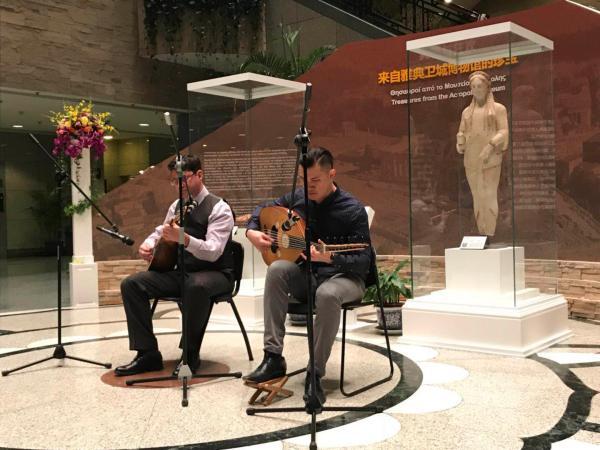
Performance scene
The exhibition "Elegance and Carnival: Treasures from the Acropolis Museum" will be held until April 8, 2018.
Attachment: Introduction of two exhibits
Cora statue
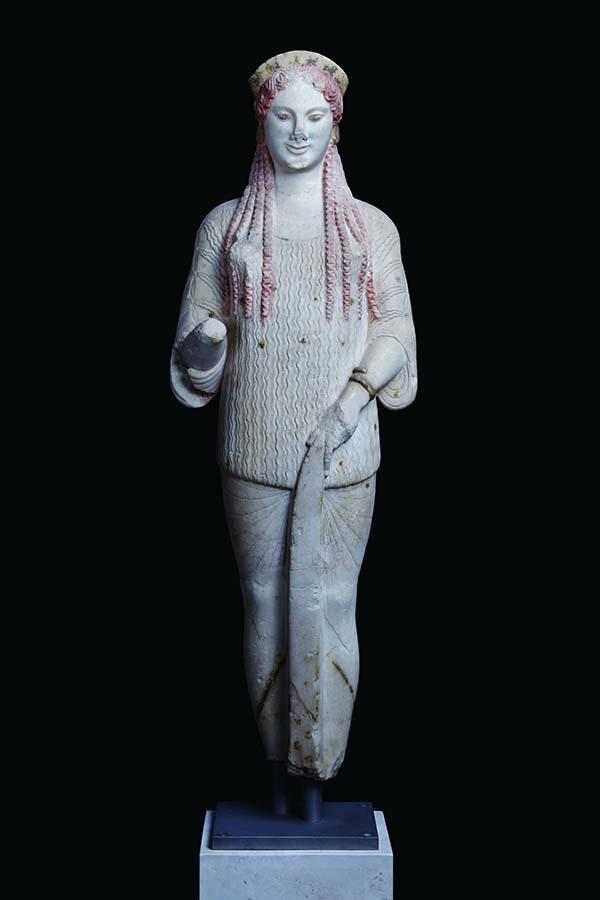
520 BC - 510 BC, marble, 1.15 meters high and 0.40 meters wide, the Greek Acropolis Museum, Acr. 670
In the middle of the 7th century BC, with the connection and exchange of ancient Greek civilization with the eastern Mediterranean and Egyptian civilization, in Greece there were statues carved with hard materials and larger statues than real people. After the Greeks incorporated the influence of foreign countries into the Greek tradition and developed the technique of using ironware, they created the first unique statues of the ancient Greek period (6th century BC - early 5th century): kouros and Kor, a marble statue of a teenager and a girl.
As the Athena worshipped by the Acropolis is a goddess, the statue of Cora, which shows the image of a girl, has become the most distinctive offering. During the archaeological excavations of the Acropolis, more than 200 statues of Cora were discovered, making the collection of the Acropolis Museum the world's largest. In the Acropolis, such tribute began in the early 6th century BC, which was related to the reconstruction of the area and the acropolis became the center of the city.
The statue of Cora is alive, and the artist passes through a series of details, such as a forward-footed foot, a lifted hem, an introverted smile called an "archaic smile", and a number of deliberate "asymmetry". It gives the statue vitality, natural state, sportiness and uniqueness. In the Acropolis, no two Cora statues are the same. This uniqueness is further strengthened after the color is rich; the colored statues seem to have life and vividly represent the world of God and man.
The statues of Kola in the Acropolis and other sculptures became the victims of the Hippo War—the Persians set fire to the Acropolis in 480 BC. After the Athenians dug pits and buried the ruined statue. These statues were not seen until the 19th century, and some traces of color remained on the statue's hair, eyes, clothing and jewelry.
Dance picture bottle painting cover
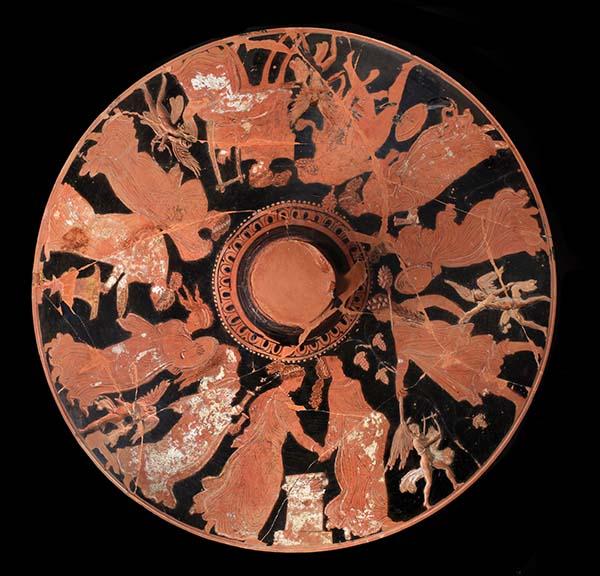
350 BC - 325 BC, clay, 0.07 meters high, 0.45 meters in diameter, Greek Acropolis Museum, NA 1956 NAK 232
Greek pottery production began around 7000 BC. With the use of pottery wheels, pottery production peaked around 3000 BC. Greek pottery has a variety of shapes and functions, resulting in a number of pottery production centers.
The Athenians used black pigments to paint characters on the red surface of the bottle. In the first half of the 6th century BC, as they continued to perfect this "black painted" bottle painting technique, the pottery making process in Athens began to be crowned in Greece. Around 530 BC, the Athenians invented a new bottle painting decoration technique, the "red painting method." They represent the characters in the natural red of the clay, and the background is black. The process characteristics of the "Red Paint" and "Black Paint" bottle paintings are all colored after the surface of the utensils are colored using diluted clay pigments, and then fired into the furnace.
The scene displayed on the lid of this “Lecanis†is closely related to Dionysus worship (the worship of Dionysus). The young god stood in front of a vine - it was a wonderful gift he gave to people, his hand was adorned with a pineapple ball and a hand with a small winged Eros (Cupid) ). Another Eros played the harp on his side. In front of Dionysus, two drunken women are holding hands around an altar dance, followed by two mad women playing clapper and beaten the drumhead. The fifth mad girl was bending over to drink from a pottery jar to fill the shallow bowl that she held on her other hand for the pouring. The sixth mad girl danced in a robe. The seventh place is sitting on the chair and playing the Kisala. A Satylos (half-horned man) dressed in animal skin is dancing wildly, and two other mad women with clapper and drums follow. After the utensils are finished, the surface is also white, blue and gold, which is more beautiful.
Want to know more about copper carving prices, copper carving wholesale, bronze sculpture joining, copper carving procurement related information, can visit http://tongdiao.99114.com/
Don't worry about how to match
We've designed a whole set of clothes directly for you. You just need to put them on
SHAOXING LIDONG TRADING CO.,LTD , https://www.lidong-garment.com